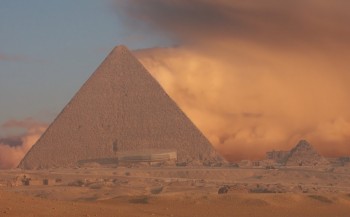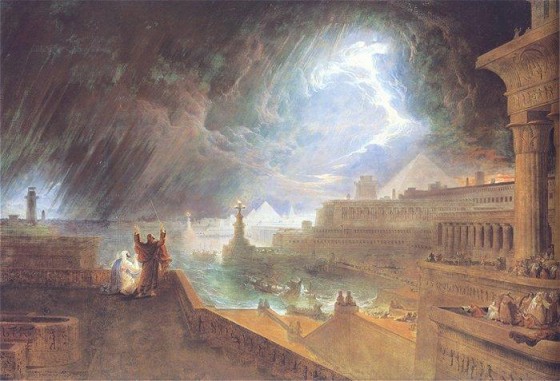Pollen and ash in Nile river delta sediment provides evidence of ancient climactic events including mega-droughts and wildfires which wiped out pyramid-building civilizations, says a study published in the recent July 2012 edition of Geology.
They waited seventy days for her to reappear. Finally she came. For a moment just before sunrise, the bright star Sirius, daughter of Ra, shimmered over the pyramids of Cairo. For generations she had always appeared as a sign that the Nile would soon flood, bringing water, fertile sediment and life to the people of Egypt. But one year her promise of sustenance failed. Something happened around the year 2200 BCE. Perhaps the snow melt from the highlands of Ethiopia never arrived. Or the infrequent rains stopped coming altogether.
Whatever the cause, a once-great river became mud. Parts of its fertile delta turned to dust. Then the fires came. They swept through the valley destroying homes, trees and crops. The people who had built the great pyramids were powerless against the climate change which led to a global drought 4200 years ago. Egypt’s pyramid-building Old Kingdom met its demise. Was climate change to blame?
 The study entitled Nile delta response to Holocene climate variability,was authored by Christopher Bernhard of the US Geological survey (USGS), Benjamin Horto of the University of Pennsylvania, and Jean-Daniel Stanley of the Smithsonian Institution.
The study entitled Nile delta response to Holocene climate variability,was authored by Christopher Bernhard of the US Geological survey (USGS), Benjamin Horto of the University of Pennsylvania, and Jean-Daniel Stanley of the Smithsonian Institution.
These researchers found that during various times throughout history, the proportion of wetland pollens in Nile Delta sediment decreased and the proportion of charcoal ash increased.
The sediment layer suggested that climate change caused severe drought conditions 3000, 4200, 5000 and 6000 years ago. Some of these drought sediment layers correspond with human records of severe droughts and the collapse of civilizations.
The Uruk Kingdom in modern Iraq collapsed about 5000 years ago. The drought 3000 years ago is associated with the fall of the Ugarit Kingdom and famines in the Babylonian and Syrian Kingdoms. The drought 4200 years ago corresponds with the end of the Old Kingdom, the pyramid builders of Egypt.
In a USGS press release, Christopher Bernhardt said, “Humans have a long history of having to deal with climate change. Along with other research, this study geologically reveals that the evolution of societies is sometimes tied to climate variability at all scales – whether decadal or millennial.”
Benjamin Horton added that, “The study geologically demonstrates that when deciphering past climates, pollen and other micro-organisms, such as charcoal, can augment or verify written or archaeological records – or they can serve as the record itself if other information doesn’t exist or is not continuous.”
Sudan, Djibouti, Eritrea, Somalia, Ethiopia, Kenya, Syria, the UK, the US and northeastern Brazil have all faced droughts this year. Blogs around the world are writing about it.
Australia faced a series of severe droughts and wildfires just in the last few years. Most of the Middle East and North Africa live precariously with scarcely enough water during a normal year, much less a drought. Much has changed over the past 6000 years, but when a drought hits and wildfires rage, we can imagine how such events might have ended civilizations.
Public domain image of The Seventh Plague (Old testament bible story, “plague of hail and fire”, Exodus 9:13-35.) by John Martin via Wikimedia.
Photo of sandstorm over Egyptian pyramids via Shutterstock





magnificent put up, very informative. I’m wondering why the other experts of this sector do not realize this.
You should proceed your writing. I am confident, you have a huge readers’ base already!
You have just proved that climate change is natural, cyclical and nothing to do with man.